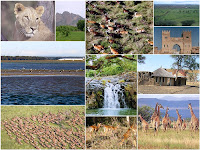Dharavi
 All cities in India are loud, but nothing matches the 24/7 decibel level of Mumbai, the former Bombay, where the traffic never stops and the horns always honk. Noise, however, is not a problem in Dharavi, the teeming slum of one million souls, where as many as 18,000 people crowd into a single acre (0.4 hectares). By nightfall, deep inside the maze of lanes too narrow even for the putt-putt of auto rickshaws, the slum is as still as a verdant glade. Once you get accustomed to sharing 300 square feet (28 square meters) of floor with 15 humans and an uncounted number of mice, a strange sense of relaxation sets in—ah, at last a moment to think straight.
All cities in India are loud, but nothing matches the 24/7 decibel level of Mumbai, the former Bombay, where the traffic never stops and the horns always honk. Noise, however, is not a problem in Dharavi, the teeming slum of one million souls, where as many as 18,000 people crowd into a single acre (0.4 hectares). By nightfall, deep inside the maze of lanes too narrow even for the putt-putt of auto rickshaws, the slum is as still as a verdant glade. Once you get accustomed to sharing 300 square feet (28 square meters) of floor with 15 humans and an uncounted number of mice, a strange sense of relaxation sets in—ah, at last a moment to think straight.Dharavi is routinely called "the largest slum in Asia," a dubious attribution sometimes conflated into "the largest slum in the world." This is not true. Mexico City's Neza-Chalco-Itza barrio has four times as many people. In Asia, Karachi's Orangi Township has surpassed Dharavi. Even in Mumbai, where about half of the city's swelling 12 million population lives in what is euphemistically referred to as "informal" housing, other slum pockets rival Dharavi in size and squalor.
Yet Dharavi remains unique among slums. A neighborhood smack in the heart of Mumbai, it retains the emotional and historical pull of a subcontinental Harlem—a square-mile (three square kilometers) center of all things, geographically, psychologically, spiritually. Its location has also made it hot real estate in Mumbai, a city that epitomizes India's hopes of becoming an economic rival to China. Indeed, on a planet where half of humanity will soon live in cities, the forces at work in Dharavi serve as a window not only on the future of India's burgeoning cities, but on urban space everywhere. Read More>>>>National Geographic
More on Dharavi: Wikipedia, TIMESAsia, BBC, Indiatogether, Monash.edu, sra.gov.in, Books, Scholar, Picasa
Image: BBC


